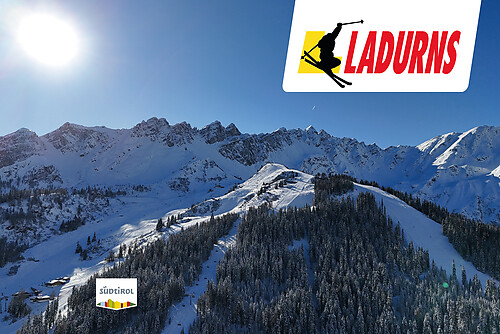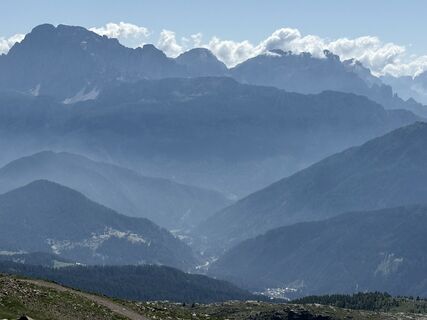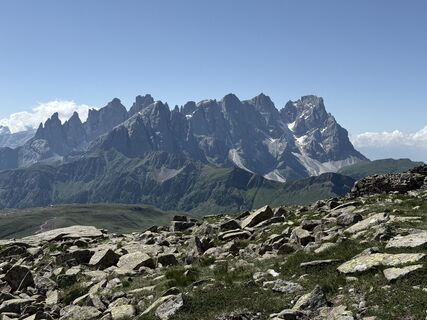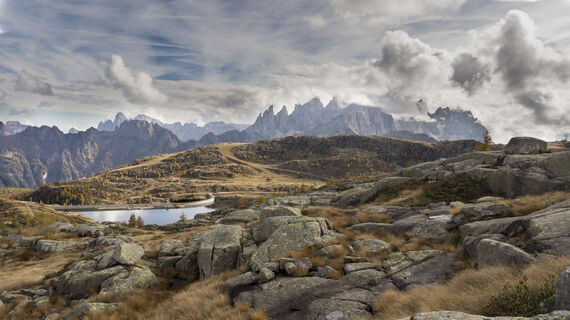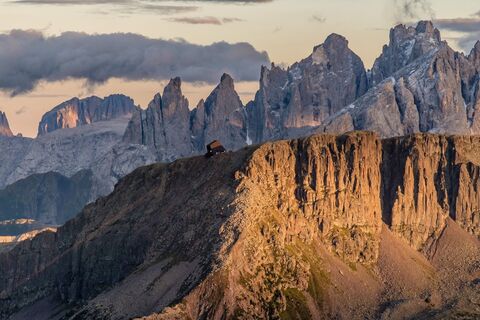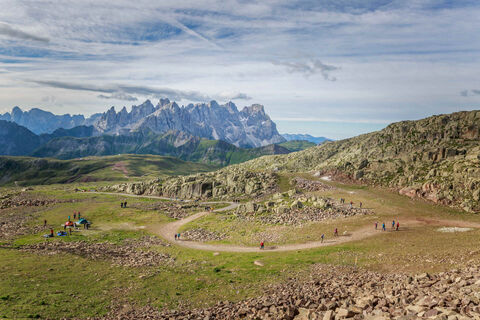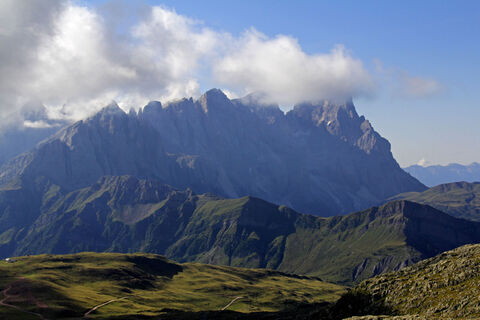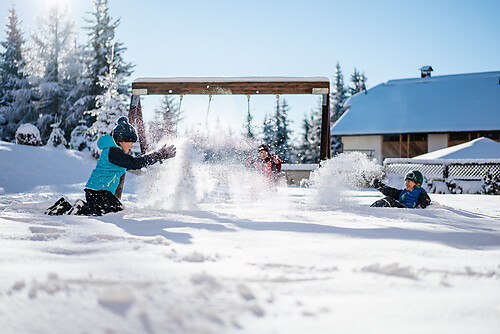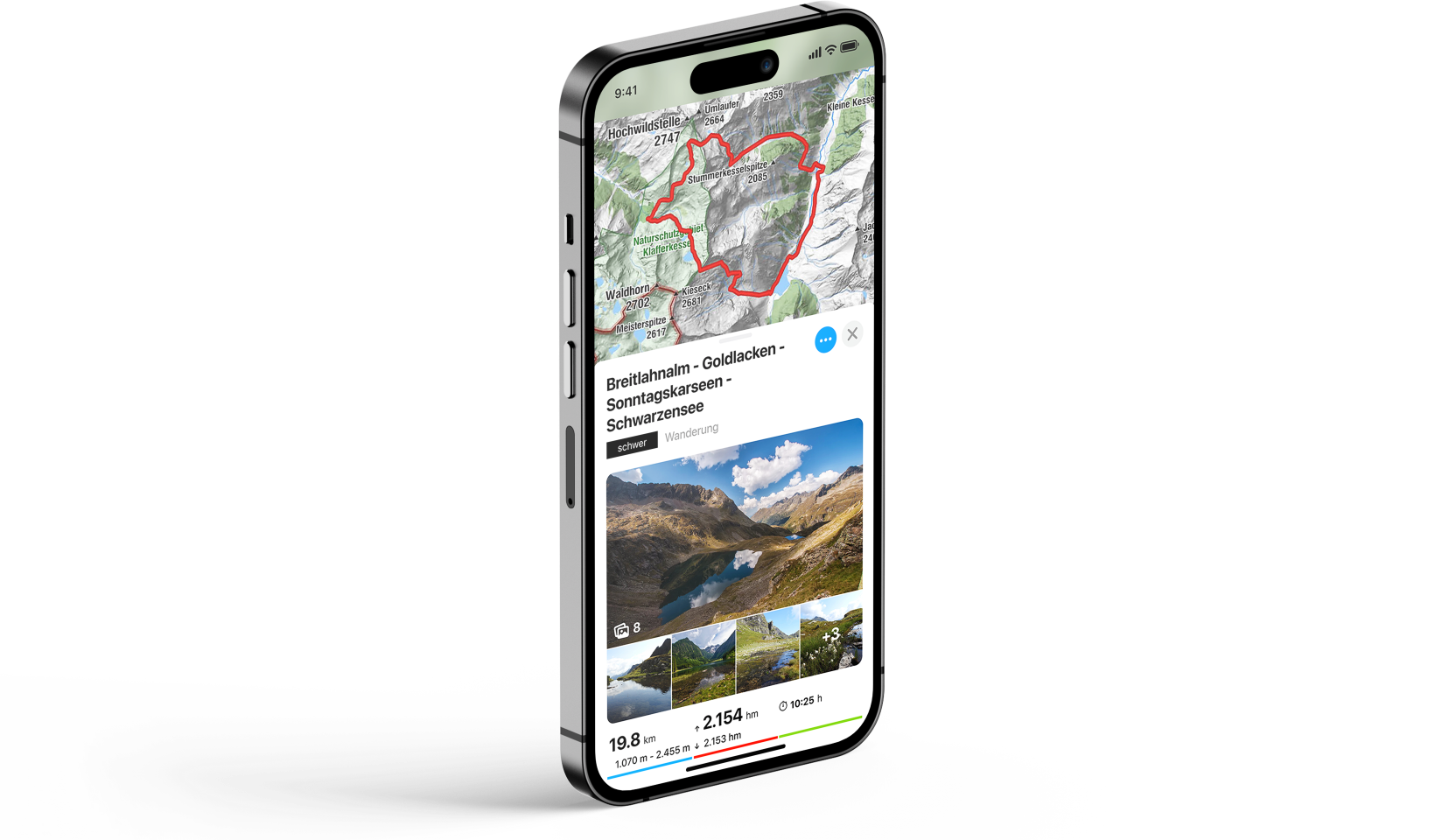Col Margherita - Geological Trail - Cavia Lake - Passo San Pellegrino
Fotók felhasználóinkról
From Passo San Pellegrino, take the cable car to reach the Col Margherita. From the top station of the lift, descend along the dirt road that retraces the ski slope (trail no. 695). Then reach the Forcella...
From Passo San Pellegrino, take the cable car to reach the Col Margherita. From the top station of the lift, descend along the dirt road that retraces the ski slope (trail no. 695). Then reach the Forcella di Pradazzo, where trail no. 658 from Passo Valles also converges. Now follow trail no. 695 which descends, through pastures and rocks, towards the artificial Cavia lake. Pass below the basin, moving to the opposite shore. Climb back up the rocky slope, with some ups and downs, arriving at Col Caviette, from where you rejoin trail no. 658. Follow it and shortly reach the Pale del Cargol balcony. Bypass the porphyric promontory towards the south, cross a rocky basin and finally the ski slope descending from Col Margherita. The trail now heads towards the pass. Through small clearings, dense rhododendron bushes and a sparse forest of Swiss stone pines and larches, you reach the cable car lower station.


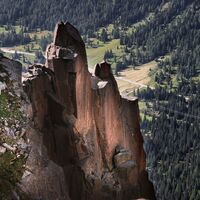


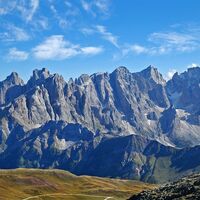
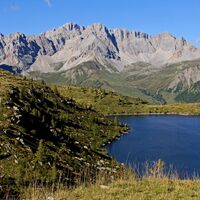

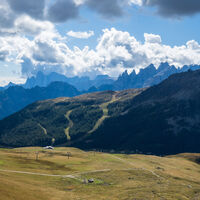
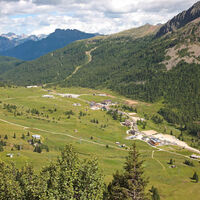
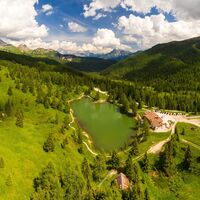
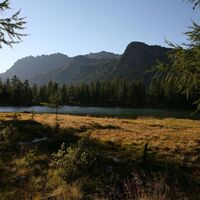
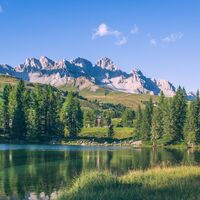

In the Col Margherita theme park, created in collaboration with MUSE (Science Museum of Trento) and geologist Claudio Valle, every step is a discovery, every glance a surprise. The UNESCO Dolomites and their history are told in a simple and original way, through an interactive route with playful-educational stations on geological themes and two panoramic balconies, made of natural stone and equipped with benches, pointers, and information panels.
From the top station of the Col Margherita cable car (2,508 m) you gain altitude following the easy path leading to three different installations, designed to stimulate the curiosity of adults and children: a dive into the past among volcanoes, glaciers, islands, seabeds, geological eras, and fossil evidence. Access on foot, no strollers allowed.
First stop: Islands or mountains? A sort of treasure hunt searching for fossils and artifacts that characterize nine representative islands of the UNESCO Dolomites groups (Pelmo-Croda da Lago, Marmolada, Pale di San Martino-San Lucano-Dolomiti Bellunesi-Vette Feltrine, Friulian Dolomites and Beyond Piave, Northern Dolomites, Puez-Odle, Sciliar-Catinaccio-Latemar, Bletterbach, Brenta Dolomites). Rotate the three hexagons, look at the icons and try to discover in which islands they are hidden.
Second stop: Balancing on time. A 30-meter path where each meter corresponds to 10 million years. Moving in balance on time, you will cross the geological eras and the main stages of the birth of the Dolomites, from 300 million years ago to today.
Third stop: The helm of the Dolomites. A huge interactive wheel to play with the profiles of the Dolomite peaks. Will you be able to guess the correct names of the mountains?
Igen
Igen
Provide appropriate clothing and equipment suitable for the commitment and length of the excursion and carry in your backpack the necessary items for any emergency situations, along with a minimal first aid kit.
Plan the route according to your abilities and the weather.
Go slow, be careful, enjoy the view and the silence.
Inform someone about your itinerary, return time, and any changes.
Trust the mountain professionals.
Help those in difficulty. Call 112 only in case of real need.
Make sure you have suitable clothing and equipment + water and snacks with you.
Respect the environment around you and its inhabitants by carrying out your trash.
Follow marked paths avoiding bikepark trails.
To protect the wonders of nature, leave everything in its place.
Bring your animal friend along, but only on a leash.
Main access gates to the valley coming from the A22, Modena-Brennero highway:
exit Ora/Egna, S.S. 48 delle Dolomiti - Passo San Lugano - Val di Fiemme - Val di Fassa (distance 45 km). From the Moena ring road (industrial area) towards Canazei exit Bolzano North, S.S. 241 Grande Strada delle Dolomiti - Passo Carezza - Vigo di Fassa (distance 40 km). From Vigo north towards Canazei, south towards Soraga di Fassa and Moena
Other entrances to Val di Fassa:
from highway A27 (Venice), exit Belluno/Ponte nelle Alpi, S.S. 203 to Agordo and S.P. 346 of Passo San Pellegrino - Moena (Val di Fassa). From the Moena ring road towards Canazei from highway A27 (Venice), exit Belluno/Ponte nelle Alpi, S.S. 203 to Agordo/Alleghe/Rocca Pietore. S.P. 641 of Passo Fedaia - Canazei coming from Arabba, S.S. 48 of Passo Pordoi - Canazei from Val Gardena, S.S. 242 Passo Sella - Canazei
Public transport lines Trentino Trasporti - Val di Fassa:
line no. 101 Canazei - Cavalese - Trento line no. 104 Cavalese - Ora - Trento line no. 123 Moena - Passo San Pellegrino - Falcade
Public transport lines SAD - Val di Fassa:
line no. 180 Vigo di Fassa - Passo Carezza - Bolzano line no. 471 Dolomite Passes (Passo Sella, Passo Gardena, Passo Campolongo, Passo Pordoi, Passo Fedaia). Service active only in summer
Free parking at the departure of the Col Margherita cable car.
Val di Fassa Tourism Board
Strèda Roma, 36
38032 Canazei (TN)
Tel. 0462 609500
info@fassa.com
www.fassa.com
The only refreshment point along the route (with a small detour) is the Rifugio Laresei.
The Col Margherita - Juribrutto area represented the key point of the Italian advance in this portion of the front. The area is well preserved on the ridge on Cima di Juribrutto; in the final part towards Col de le Palue, it is possible to visit the recently restored Italian galleries.
Népszerű túrák a környéken
Ne maradjon le az ajánlatokról és az inspirációról a következő nyaralásához!
Az Ön e-mail címe hozzá lett adva a levelezőlistához.




